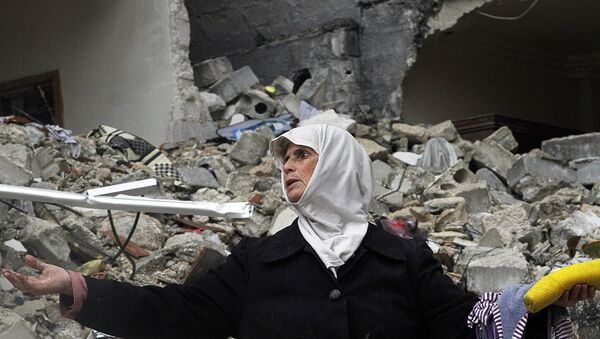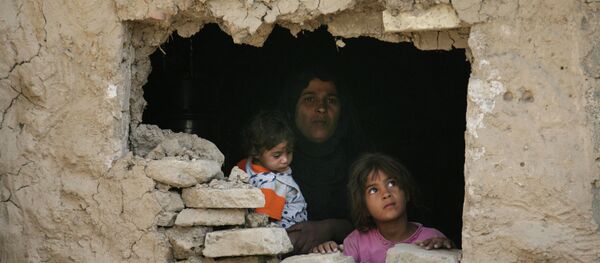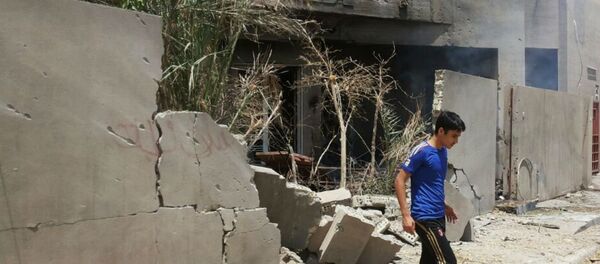The report, titled 'Civilian deaths from weapons used in the Syrian conflict', looked at more than 78,000 violent civilian deaths that occurred in Syria between March 2011 and January 2015.
The aim of the study was to identify how many fatalities certain weapons resulted in and subsequently find any correlations with various demographic groups.
One year into Coalition's Syria war, monitors @syriahr say 3,550 killed in airstrikes — 225 of whom were civilians http://t.co/TDys20R0Ae
— Airwars (@airwars_) September 24, 2015
A breakdown of the statistics showed that children were more likely to be killed by air bombardments, shells and ground levels explosives than men or women.
The report, published in medical journal BMJ, noted that "women were the second most likely to die due to explosive weapons, while the likelihood of death for men was higher for shootings and executions".
Calls to Ban Explosive Weapons
Researchers concluded that while all sides of the conflict claim to target enemy militia strongholds in their bombing campaigns, "our findings indicate that for Syrian children these are the weapons most likely to cause death".

The report called for air attacks and explosive weapons on all sides to be “prohibited or systematically monitored to demonstrate civilian protection”.
"Furthermore, the evidence that child deaths from air bombardments, shells, and ground level explosives were equal or higher than those caused by chemical weapons, should prompt equal international condemnation and control."
The fact that explosives were hitting many residential areas has also been seen as a driving factor in exacerbating the exodus of people from Syria over the past four years, according to the report.
"Our study shows that civilians become the main target of weapons and bear a disproportionate share of the burden of bombings. If we are looking for root causes of the migrant and refugee crises in Europe today, this is surely a major contributor."
Findings Raise Questions Over International Coalition Airstrikes
The fact that women and children are disproportionate fatalities of bombing attacks is sure to call into question the US-led coalition’s anti-ISIL strategy in Iraq and Syria.
The coalition has undertaken a series of heavy airstrikes against ISIL targets for more than 12 months, while working with various rebel groups on the ground.
While officially US officials have taken responsibility for two deaths as a result of the bombing campaign against ISIL, a recent report by the Airwars project, aimed at calculating the number of civilian casualties, concluded that as many as 591 civilians may have been killed as a direct result of the international coalition’s airstrikes against ISIL targets in Iraq and Syria.
Following news that France and Australia were among countries recently expanding their military action in Syria, there are fears that the increase in airstrikes will result in more civilian deaths, while not severely denting ISIL’s position in the region.
Instead of arming rebel groups and government forces, as the US-led coalition has done in Syria and Iraq respectively, chief researcher Debarati Guha-Sapir said that international partners should be working towards limiting and reducing arms to stifle the conflict.
"Given the mortality burden of weapons on children and women in Syria, active measures to stem the flow of heavy armaments to all sides in the Syrian conflict are a possible way to cease hostilities."
While many Western leaders have backed the US-led bombing campaign, others such as UK opposition leader Jeremy Corbyn have called for an international conference involving the US, EU, Russia, Iran and other regional powers to be established, in order to find a way to bloc ISIL’s access to arms and revenue.






